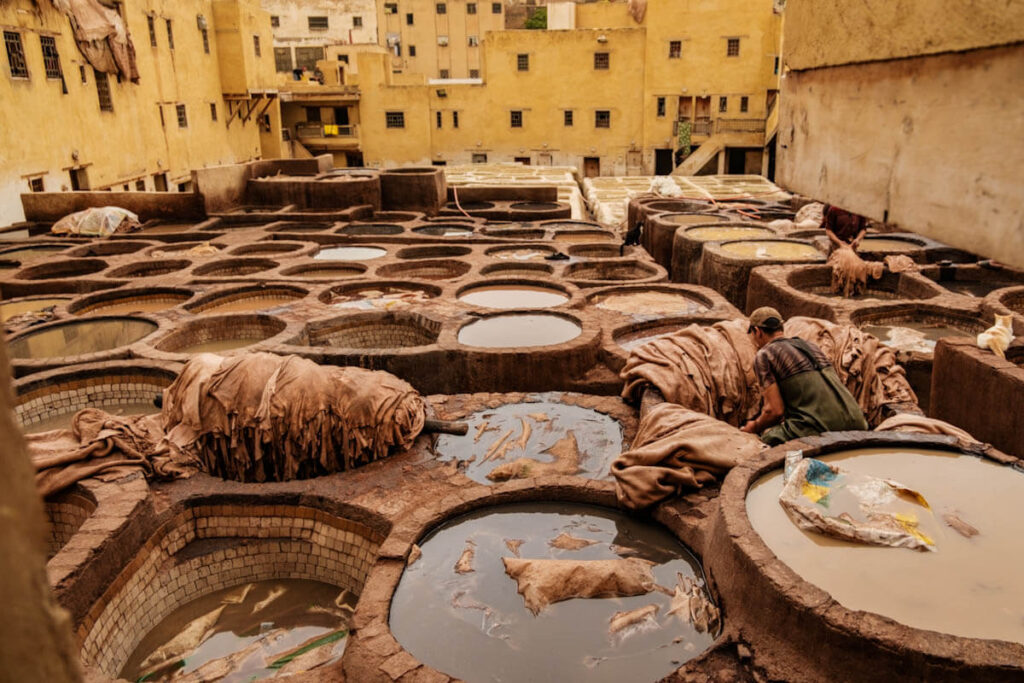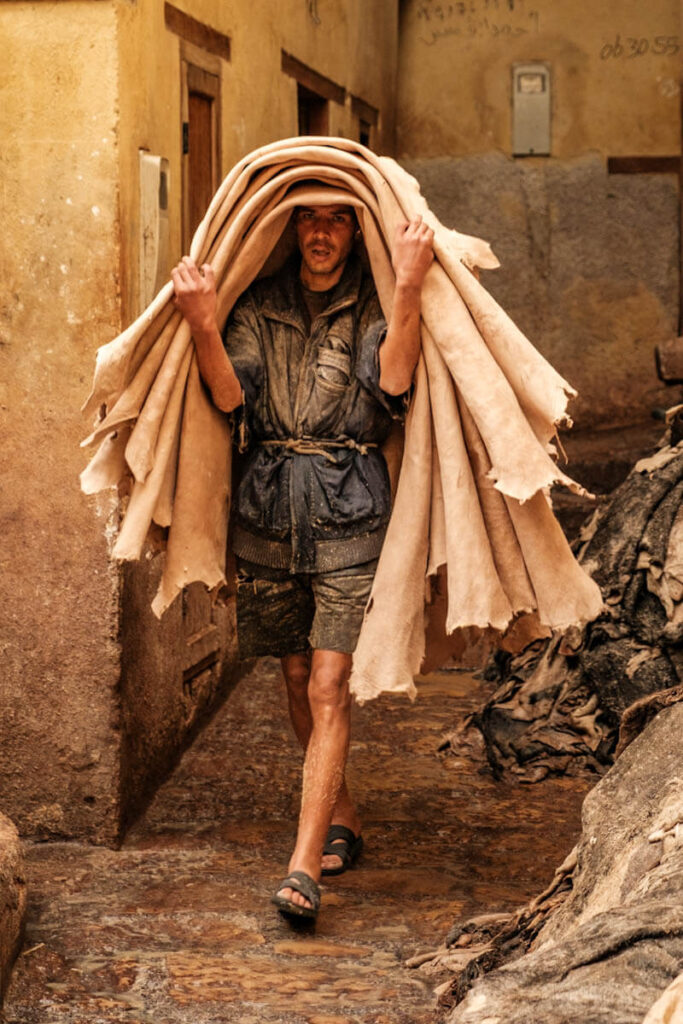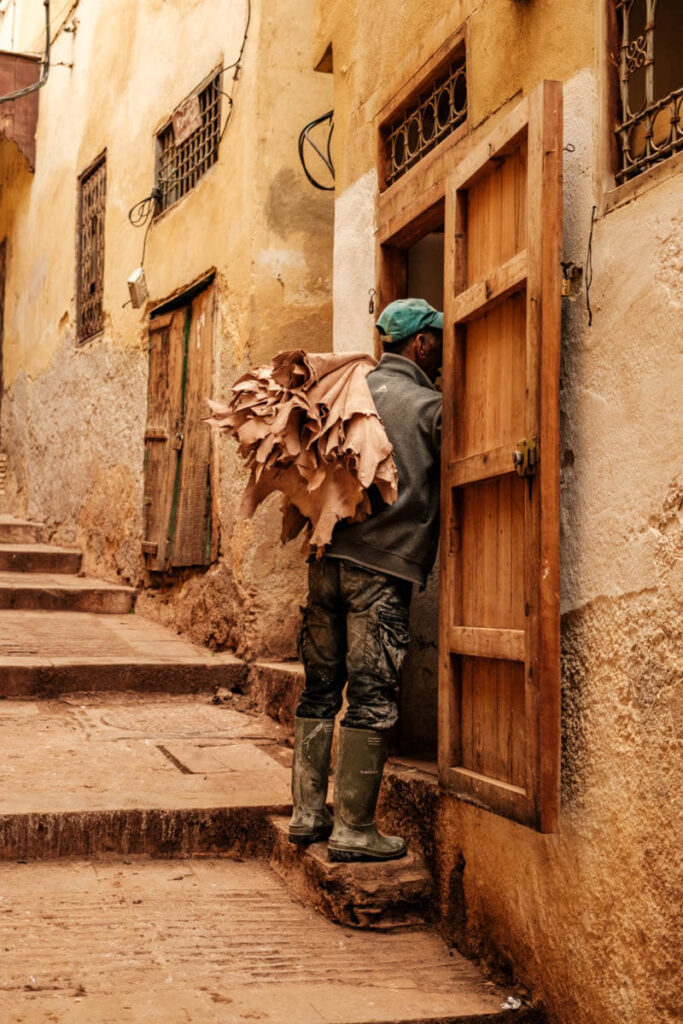Chouara Tannery is one of the three tanneries in the medina of Fez. It is world-famous for its traditional leather-making method, which has remained unchanged for centuries. If you’re visiting Fez during your trip to Morocco, be sure not to miss the Chouara Tannery.
Where is Chouara Tannery?
Chouara is located centrally in the historic district of Fez (Fes el Bali, the walled medina), nestled between buildings. No matter how easily you might get lost in the medina, you’re sure to find the tannery. Chouara is well-marked on Google Maps and as you get closer, the smell becomes stronger. Once you’re near, you’ll find plenty of shop employees from leather goods stores inviting you inside, where you can take a view of the tannery from a rooftop terrace.
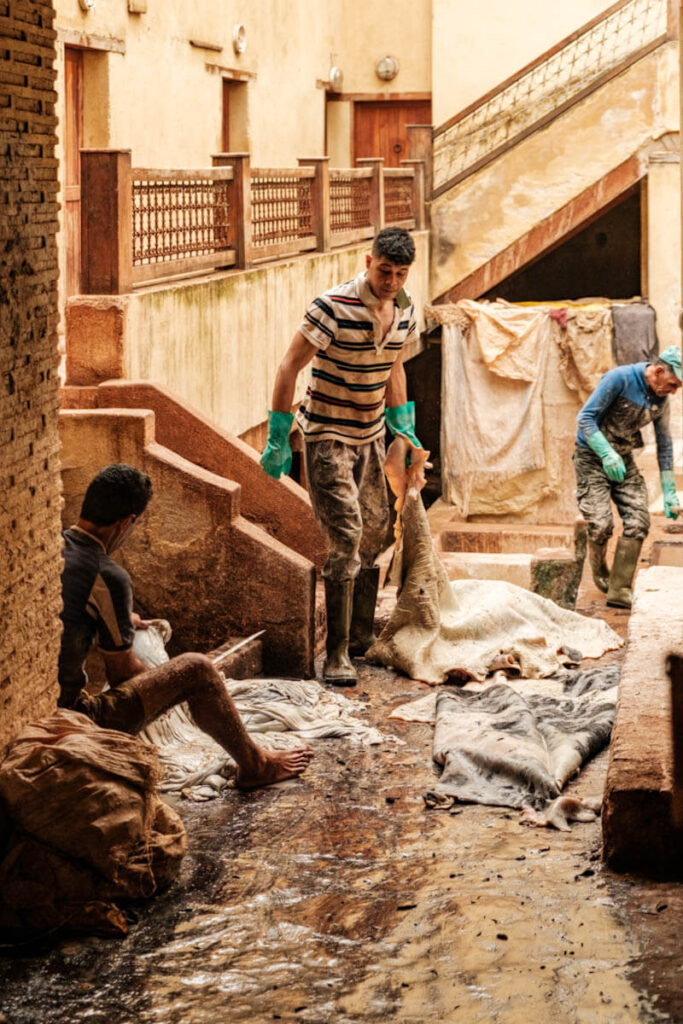
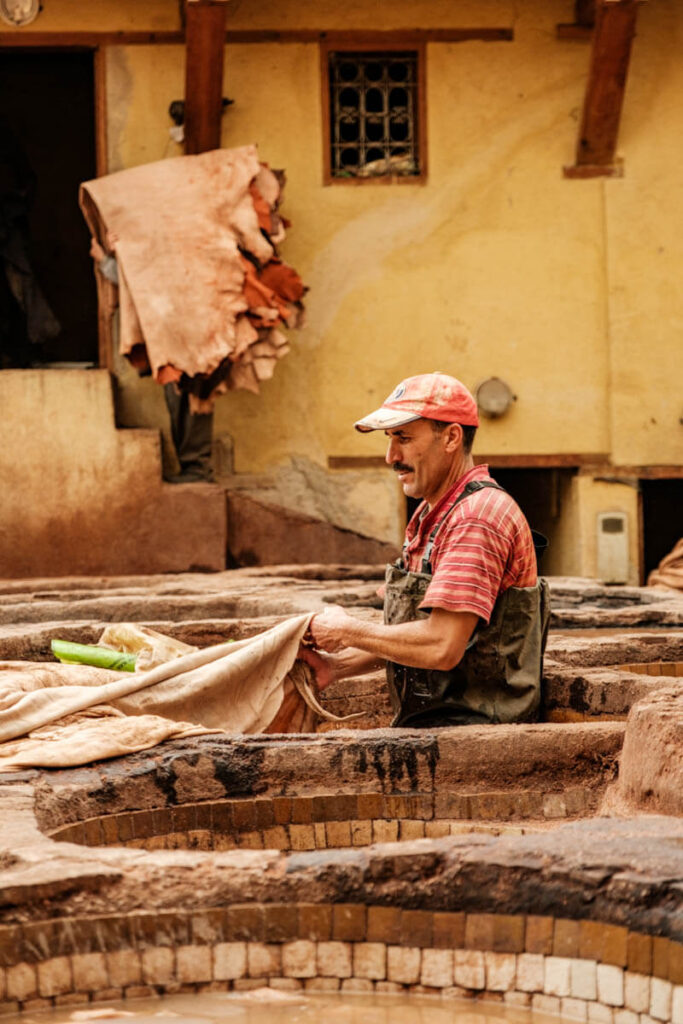
One of the oldest tanneries in the world
Chouara Tannery is not only the most famous tannery, but it is also believed to be the oldest. It has been in operation since the 11th century, during the period when Fez was founded by the Idrisid dynasty. This makes it one of the oldest still-functioning tanneries in the world. At that time, there were dozens of tanneries in Fez; now, only three remain. Sidi Moussa Tannery is located a bit further to the west and Ain Azliten Tannery is a bit to the north of Chouara. These two tanneries are much smaller than Chouara and are visited far less often.

The leather tanning process
Chouara Tannery is located near the Oued Bou Khrareb canal and this is no coincidence. The leather tanning process requires a large amount of water. Several steps are involved in preparing the leather. First, the hides (from cows, donkeys, sheep, goats, camels and horses) are soaked in limewater mixed with pigeon droppings and urine. The pigeon droppings and urine contain natural ammonia, which softens the hides and makes it easier to remove fat and hair. Once the hides are soft enough, they are dyed by immersing them in large stone vats filled with natural dyes. Among the dyes used are henna (for red), saffron (for yellow), cedarwood (for brown) and indigo (for blue). After dyeing, the hides are hung along the walls of the tannery to dry. Once dry, they are often oiled to give the leather a glossy finish.

Visiting the Chouara Tannery
Most of the buildings surrounding Chouara have rooftops offering a great view of the work being done in the tannery. In general, visitors aren’t allowed inside the tannery itself, but I get lucky. With a guide, I’m able to enter the tannery and photograph the tanners up close. Before we go in, I’m given a few sprigs of mint and I think to myself, “It can’t be that bad.” Well, it really is! The stench is unbearable. After gagging a few times, I shove the mint sprigs up my nose and try to breathe through my mouth. It immediately makes me think about the working conditions of these people and the toll it must take on their bodies. This can’t be healthy, can it?
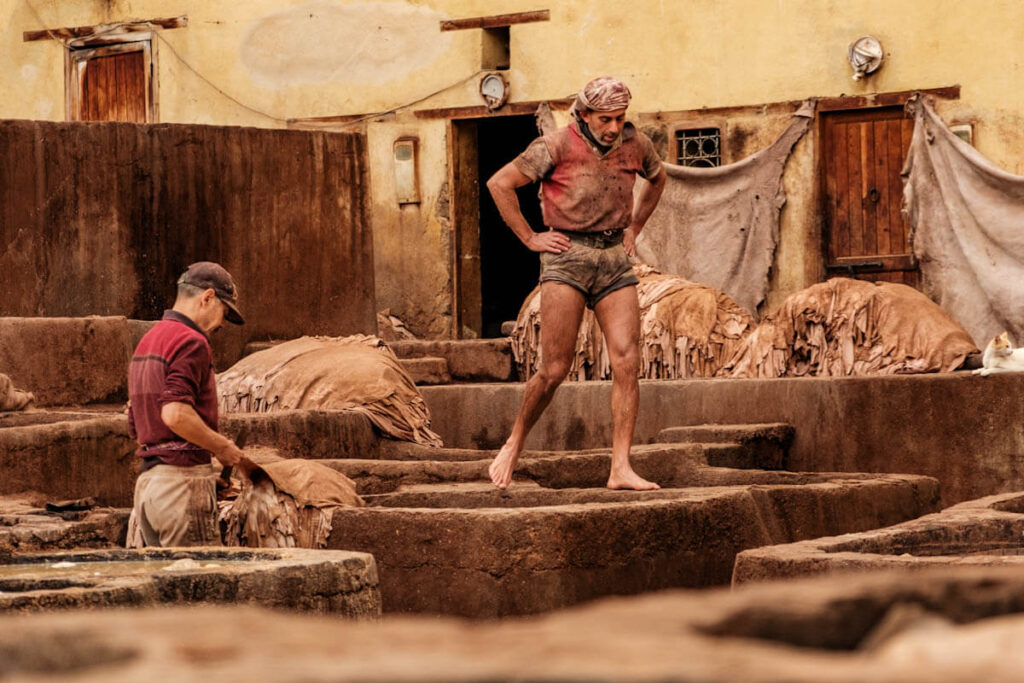
Best spot to photograph the Chouara Tannery
I’m super excited when I get to walk between the dye vats and freely take photos. The tanners are fine with it, as long as you don’t get in their way. But, honestly, you can’t help but feel like you’re in the way. The paths are narrow and you constantly encounter tanners covered in wet hides. Let me tell you, it’s pretty thrilling when you’re walking along a 50 cm wide ledge between the vats! I think next time I might prefer to shoot from above, if I had to choose. Especially with a zoom lens, you can capture amazing shots from above. Plus, from this vantage point, you can take in all the vats at once and that’s fascinating to see.
